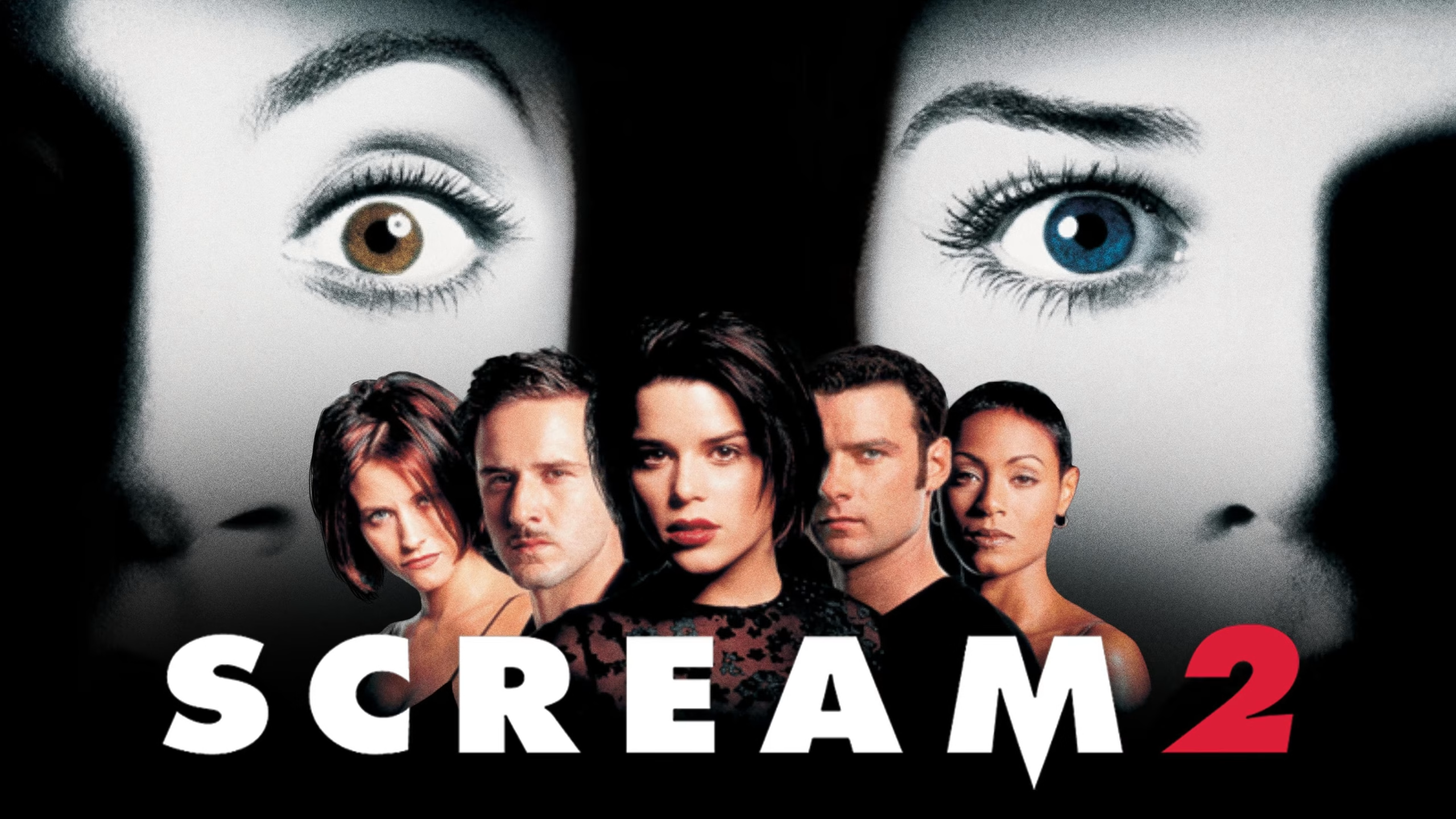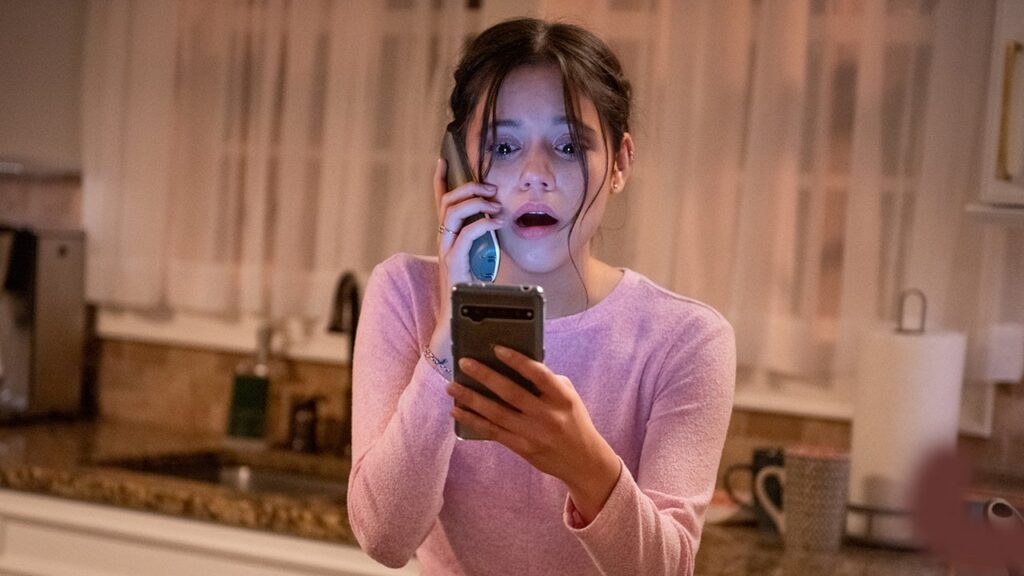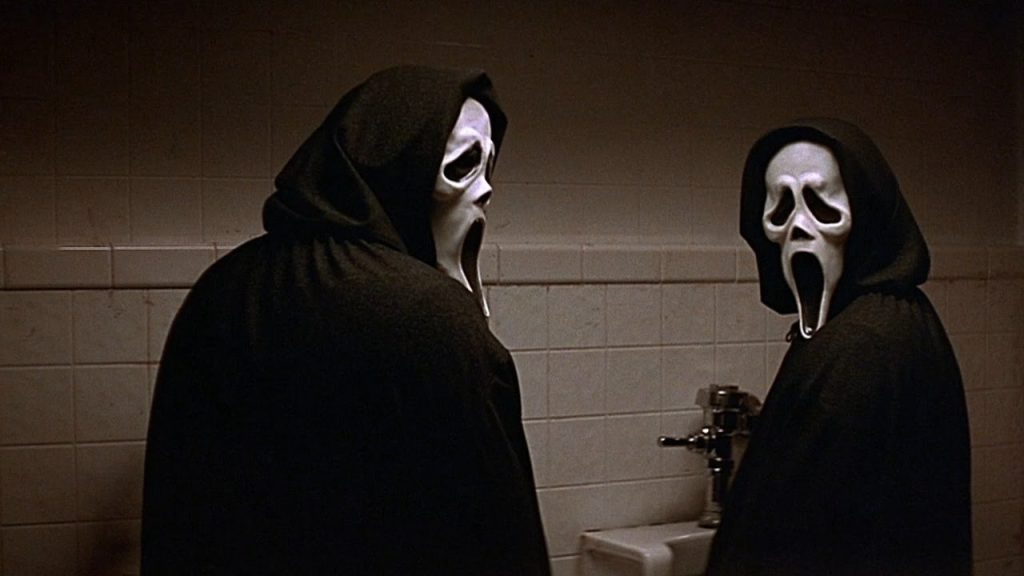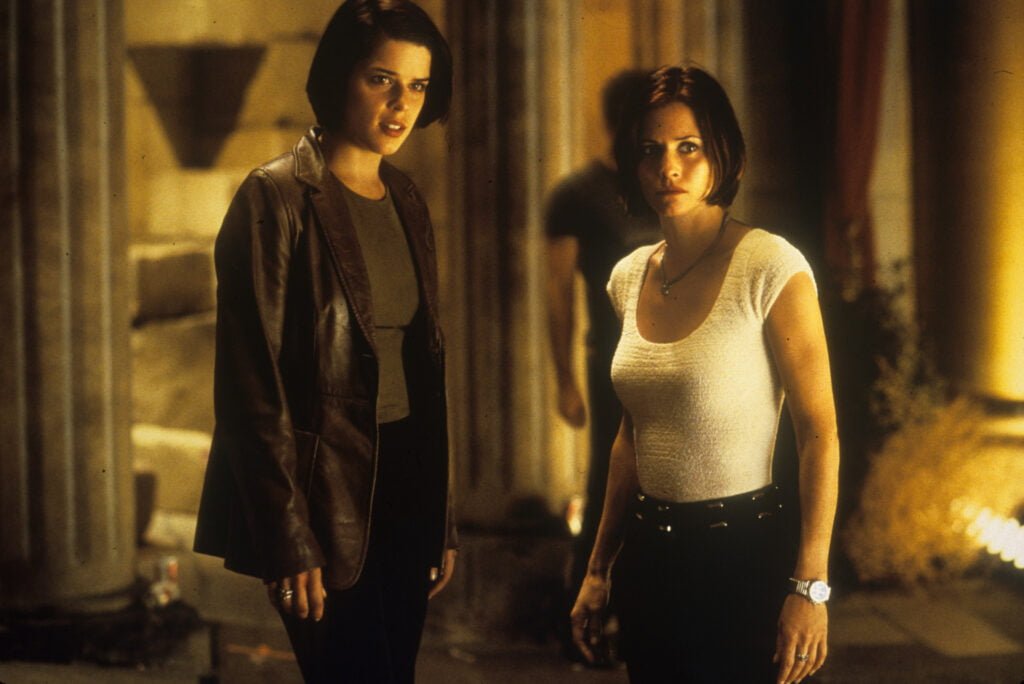Editorials
Wendy Carlos Pioneer of Horror Movie Synth Soundtracks

NOTE: Since the publishing of this article 2 years ago, I have been made aware of some major mistakes and misinformation that were in its original iteration. A sincere thank you to Charlie Brigden, a freelance journalist best known for their work talking about film scores. They have informed me of the errors in this article on Wendy Carlos, and helped me amend them. My gratitude to them for helping make this article better, and my gratitude to you for reading. Thanks!
Some musicians actively strive to be the ones brought up in every conversation and fought for in every debate. Some of them even succeed. That some is John Carpenter. You can’t walk more than five feet into a talk about synth music without tripping and falling face-first into Carpenter’s oeuvre. And the reason for that has to do with the outrageous success he’s had in his primary medium: film.
Carpenter’s Lasting Influence on Modern Horror Films
Truly, Carpenter’s soundtracks are one of the first things that come up in any conversation about music in movies. Let alone music in horror movies which he dominated. Go to even his least successful horror film endeavors, and you will find nothing but heat.
For a good reason, I think there’s nothing quite like a Carpenter soundtrack, and many of the artists in the horror scene inspired by him would probably agree. Synth soundtracks emulating his style have since become all the rage with modern horror movies that call back to the 80s and 90s. Terrifier 2, Psycho Goreman, Mandy, The Guest, and It Follows are just what come to mind first. They’re the beginning of an exhaustive list of films with nostalgic synth soundtracks harkening back to his discography. So really, is there anybody who compares when it comes to his influence?
Wendy Carlos. The other some.
Wendy Carlos: Pioneering Electronic Music and Horror Scores
A brief introduction for the uninitiated: when it comes to electronic music, Carlos was the vanguard. Her magnum opus, Switched-on-Bach, is a collection of Bach pieces recreated entirely with the then-mostly unknown Moog synthesizer. The album was met with explosive commercial and critical acclaim for its never before heard innovation, and the Moog became an invaluable studio tool for musicians across the world.
She also became the first transgender Grammy award winner for Switched and by extension, one of the most prominent queer artists of the modern era. If Robert Moog was the man who crafted the ship, Wendy Carlos was the captain who steered it into the great unknown. She returned with untold riches, encouraging others to do the same.
You know, without a John Carpenter’s The Fog situation happening.
Carlos’ Overlooked Impact on Horror Cinema
Carlos has always been at the head of the line when discussing great modern composers. Still, I find that in casual conversation, she’s greatly overlooked and underrated for her influence on movies, particularly horror movies.
Carlos as an artist, and the Switched-on-Bach album, has been cited more than a few times by John Carpenter as one of his big inspirations, alongside bands like Tangerine Dream and the Italian horror mainstay Goblin. He is the way I found out about her in the first place.
After her work on Switched-On-Bach, she went on to produce the soundtrack to A Clockwork Orange, a film I would classify as psychological horror (but that’s a discussion for another day). Her cutting-edge reinterpretations of Beethoven and other classical musicians were the level of bold necessary for Kubrick movies. They perfectly engendered the horrors of Alex, his droogs, and the establishment around them. She built a soundscape that fit its mise-en-scene like a glove. And that was a feat she would replicate in another Stanley Kubrick classic she worked on.
Crafting the Iconic Sound of The Shining With Rachel Elkind
If scoring one of the greatest films of all time wasn’t enough, how about two? Proper respect is doled out in doses few and far between when it comes to horror, so let’s acknowledge her crowning achievement in cinematic scores: The Shining (1980), one of the greatest horror movies of all time.
This score was made in cooperation with her partner, Rachel Elkind, a classical musician, singer, and composer. In the original version of this article, I completely ignored Elkind’s massive contribution to the score, a failure of recognition that was unfortunately quite common according to Carlos herself. Rachel’s training as a jazz singer, her vocal range, and her style of musical composition complimented Carlos’ perfectly. It brought dynamism to their work in unexpected ways; her voice is even baked into the opening theme of The Shining, creating what Carlos described as the “sizzle effect” that permeates through the opening of the song.
The blend of music the two made is, frankly, inimitable. The Shining’s self-titled main theme is one of those songs that captures the tensest moments in the film. The piece has these inflection points that can send little noises into your ear and down your spine. The song is the voice of the Overlook and the first voice that speaks to you when you start watching.
A Symphony of Psychological Horror and The Lost Tracks of The Shining
It’s a neat reflection of the situation Stephen King penned and Kubrick adapted. The ghosts of the Overlook are a symphony of many players digging into Jack Torrance’s brain, and you are in the orchestra pit right with him. Carlos’ song embodies the gravity of being trapped in a horror that isn’t immediately apparent, becoming slowly and horribly aware of the overwhelming force you’re already standing inside.
There is one particular sound around the one-minute mark, this reverberating percussive force that shows up in the theme, that makes me want to look over my shoulder; sometimes, I even give in. It’s a fascinating, living noise with its own spirit, just like the hotel, and it is masterful.
Though much of Carlos and Elkind’s original work was shelved for the film and is hard to find outside of some very expensive CD copies, The Shining audio that is available will make your head spin. Carlos wrote the soundtrack to match the book before modifying it for the film, and its seamlessness is impressive. The teaser trailer for The Shining also contains the original “Clockworks (Bloody Elevators)” track that played during the infamous scene if you want a sliver of what could have been.
(P.S. I’m still miffed that it never made the final cut.)
Echoes in Modern Horror Scores
There are echoes of Carlos and Elkind’s work throughout modern horror film scores today. Take the acclaimed work of Colin Stetson in Hereditary, or Ben Salisbury and Geoff Barrow in Annihilation, or one of my favorites, Mica Levi’s unforgettable score for Under the Skin. All those soundtracks, and countless contemporaries, were touched by Carlos and Elkind.
And now here, in our new golden age of horror through the strange 2010s and roaring 2020s, the scores of a film are no longer a secondary aspect for your general audiences; it’s a deciding factor for many viewers. Bear McCreary for one, has lured me to many movies I wouldn’t have seen otherwise because his soundtracks are golden, and the fundamentals of what Wendy Carlos made run parallel to their works.
Yes, You Should Be Thanking Wendy Carlos
Not every musician is a fan of Carpenter, but most musicians owe Wendy Carlos something for her influence on modern music production, and it shows through the currents of inspiration that she cut indelible grooves into horror movie history.
Carlos famously began her most-seen interview on the Moog Synthesizer with the BBC by saying, “You have to build every sound. And to start to build these sounds, you have to start with something very simple.” While Wendy Carlos’ discography was by no means simple in creation or consumption, it is undoubtedly one massive spawning point, a tree trunk that branches out into the history of music.
And in terms of horror movie soundtracks, you’d be hard-pressed to find me another composer that deserves more credit. So, consider this that long overdue thank you we all owe her.
Editorials
‘The Woman in Black’ Remake Is Better Than The Original

As a horror fan, I tend to think about remakes a lot. Not why they are made, necessarily. That answer is pretty clear: money. But something closer to “if they have to be made, how can they be made well?” It’s rare to find a remake that is generally considered to be better than the original. However, there are plenty that have been deemed to be valuable in a different way. You can find these in basically all subgenres. Sci-fi, for instance (The Thing, The Blob). Zombies (Dawn of the Dead, Evil Dead). Even slashers (The Texas Chainsaw Massacre, My Bloody Valentine). However, when it comes to haunted house remakes, only The Woman in Black truly stands out, and it is shockingly underrated. Even more intriguingly, it is demonstrably better than the original movie.
The Original Haunted House Movie Is Almost Always Better
Now please note, I’m specifically talking about movies with haunted houses, rather than ghost movies in general. We wouldn’t want to be bringing The Ring into this conversation. That’s not fair to anyone.
Plenty of haunted house movies are minted classics, and as such, the subgenre has gotten its fair share of remakes. These are, almost unilaterally, some of the most-panned movies in a format that attracts bad reviews like honey attracts flies.
You’ve got 2005’s The Amityville Horror (a CGI-heavy slog briefly buoyed by a shirtless, possessed Ryan Reynolds). That same year’s Dark Water (one of many inert remakes of Asian horror films to come from that era). 1999’s The House on Haunted Hill (a manic, incoherent effort that millennial nostalgia has perhaps been too kind to). That same year there was The Haunting (a manic, incoherent effort that didn’t even earn nostalgia in the first place). And 2015’s Poltergeist (Remember this movie? Don’t you wish you didn’t?). And while I could accept arguments about 2001’s THIR13EN Ghosts, it’s hard to compete with a William Castle classic.
The Problem with Haunted House Remakes
Generally, I think haunted house remakes fail so often because of remakes’ compulsive obsession with updating the material. They throw in state-of-the-art special effects, the hottest stars of the era, and big set piece action sequences. Like, did House on Haunted Hill need to open with that weird roller coaster scene? Of course it didn’t.
However, when it comes to haunted house movies, bigger does not always mean better. They tend to be at their best when they are about ordinary people experiencing heightened versions of normal domestic fears. Bumps in the night, unexplained shadows, and the like. Maybe even some glowing eyes or a floating child. That’s all fine and dandy. But once you have a giant stone lion decapitating Owen Wilson, things have perhaps gone a bit off the rails.

The One Big Exception is The Woman in Black
The one undeniable exception to the haunted house remake rule is 2012’s The Woman in Black. If we want to split hairs, it’s technically the second adaptation of the Susan Hill novel of the same name. But The Haunting was technically a Shirley Jackson re-adaptation, and that still counts as a remake, so this does too.
The novel follows a young solicitor being haunted when handling a client’s estate at the secluded Eel Marsh House. The property was first adapted into a 1989 TV movie starring Adrian Rawlings, and it was ripe for a remake. In spite of having at least one majorly eerie scene, the 1989 movie is in fact too simple and small-scale. It is too invested in the humdrum realities of country life to have much time to be scary. Plus, it boasts a small screen budget and a distinctly “British television” sense of production design. Eel Marsh basically looks like any old English house, with whitewashed walls and a bland exterior.
Therefore, the “bigger is better” mentality of horror remakes took The Woman in Black to the exact level it needed.

The Woman in Black 2012 Makes Some Great Choices
2012’s The Woman in Black deserves an enormous amount of credit for carrying the remake mantle superbly well. By following a more sedate original, it reaches the exact pitch it needs in order to craft a perfect haunted house story. Most appropriately, the design of Eel Marsh House and its environs are gloriously excessive. While they don’t stretch the bounds of reality into sheer impossibility, they completely turn the original movie on its head.
Eel Marsh is now, as it should be, a decaying, rambling pile where every corner might hide deadly secrets. It’d be scary even if there wasn’t a ghost inside it, if only because it might contain copious black mold. Then you add the marshy grounds choked in horror movie fog. And then there’s the winding, muddy road that gets lost in the tide and feels downright purgatorial. Finally, you have a proper damn setting for a haunted house movie that plumbs the wicked secrets of the wealthy.
Why The Woman in Black Remake Is an Underrated Horror Gem
While 2012’s The Woman in Black is certainly underrated as a remake, I think it is even more underrated as a haunted house movie. For one thing, it is one of the best examples of the pre-Conjuring jump-scare horror movie done right. And if you’ve read my work for any amount of time, you know how positively I feel about jump scares. The Woman in Black offers a delectable combo platter of shocks designed to keep you on your toes. For example, there are plenty of patient shots that wait for you to notice the creepy thing in the background. But there are also a number of short sharp shocks that remain tremendously effective.
That is not to say that the movie is perfect. They did slightly overstep with their “bigger is better” move to cast Daniel Radcliffe in the lead role. It was a big swing making his first post-Potter role that of a single father with a four-year-old kid. It’s a bit much to have asked 2012 audiences to swallow, though it reads slightly better so many years later.
However, despite its flaws, The Woman in Black remake is demonstrably better than the original. In nearly every conceivable way. It’s pure Hammer Films confection, as opposed to a television drama without an ounce of oomph.
Editorials
Is ‘Scream 2’ Still the Worst of the Series?

There are only so many times I can get away with burying the lede with an editorial headline before someone throws a rock at me. It may or may not be justified when they do. This article is not an attempt at ragebaiting Scream fans, I promise. Neither was my Scream 3 article, which I’m still completely right about.
I do firmly believe that Scream 2 is, at the very least, the last Scream film I’d want to watch. But what was initially just me complaining about a film that I disregard as the weakest entry in its series has since developed into trying to address what it does right. You’ve heard of the expression “jack of all trades, master of none”, and to me Scream 2 really was the jack of all trades of the franchise for the longest time.
It technically has everything a Scream movie needs. Its opening is great, but it’s not the best of them by a long shot. Its killers are unexpected, but not particularly interesting, feeling flat and one-dimensional compared to the others. It has kills, but only a few of them are particularly shocking or well executed. It pokes fun at the genre but doesn’t say anything particularly bold in terms of commentary. Having everything a Scream movie needs is the bare minimum to me.
But the question is, what does Scream 2 do best exactly? Finding that answer involves highlighting what each of the other sequels are great at, and trying to pick out what Scream 2 has that the others don’t.

Scream 3 Is the Big Finale That Utilizes Its Setting Perfectly
Scream as a series handily dodges the trap most horror franchises fall into: rehashing and retreading the same territory over and over. That’s because every one of its films are in essence trying to do something a little different and a little bolder.
Scream 3 is especially bold because it was conceived, written, and executed as the final installment in the Scream series. And it does that incredibly well. Taking the action away from a locale similar to Woodsboro, Scream 3 tosses our characters into the frying pan of a Hollywood film production. Despite its notorious number of rewrites and script changes (one of which resulted in our first solo Ghostface), it still manages to be a perfect culmination of Sidney Prescott’s story.
I won’t repeat myself too much (go read my previous article on the subject), but 3 is often maligned for as good a film as it turned out to be. And for all of its clunkier reveals, and its ghost mom antics, it understands how to utilize its setting and send its characters off into the sunset right.
Scream 4’s Meta Commentary Wakes Scream from a Deep Sleep
As Wes Craven’s final film, Scream 4 has a very special place in the franchise. It was and still is largely adored for bringing back the franchise from a deep 11-year sleep. With one of the craziest openings in any horror film, let alone a Scream film, it sets the tone for a bombastic return and pays off in spades with the journey it takes us on.
Its primary Ghostface Jill Roberts is a fan favorite, and for some people, she is the best to ever wear the mask. Its script is the source of many memorable moments, not the least of which is Kirby’s iconic rapid-fire response to the horror remakes question. And most importantly, it makes a bold and surprisingly effective return for our main trio of Sidney, Dewey, and Gale, whose return didn’t feel trite or hammy when they ended up coming back to Woodsboro for more.
Craven’s work on 4 truly understands the power its predecessors had exerted on the horror genre, both irreverent in its metacommentary and celebratory of the Scream series as a whole. The film is less of a love letter to the genre and more of a kicking down of the door to remind people what Scream is about. 4’s story re-established that Scream isn’t going away, no matter how long it takes for another film, and no matter how many franchises try to take its place.

Scream 5 & 6 Is Radio Silence’s Brutal and Bloody Attitude Era
Put simply, Scream 5 and 6’s strong suit was not its characters. It was not its clever writing. The Radio Silence duology in the Scream series excelled in one thing: beating the hell out of its characters.
Wrestling fans (of which there is an unsurprising amount of crossover with horror fans) will know why I call it the Attitude Era. Just like WWE’s most infamous stretch of history, Radio Silence brought something especially aggressive to their entries. And it’s because these films were just brutal. Handing the reins to the series, Bettinelli-Olpin and Gillet gifted a special kineticism to the classic Scream chase sequences, insane finales, and especially its ruthless killers.
All five of the Ghostfaces present in 5 and 6 are the definition of nasty. They’re unrelenting, and in my humble opinion, the freakiest since the original duo of Stu Macher and Billy Loomis. Getting to hear all the air get sucked out of the room as Dewey is gutted like a fish in 5 was still an incredible moment to experience in theatres, and it’s something I don’t think would have happened if the films were any less mean and any less explosively violent.

So, What Does Scream 2 Do Best Exactly?
So now, after looking at all these entries and all of their greatest qualities, what does Scream 2 have that none of the others do? What must I concede to Scream 2?
Really great character development.
Film is a medium of spectacle most of the time, and this is reflected in how we critique and compliment them. It affects how we look back on them, sometimes treating them more harshly than they deserve because they don’t have that visual flash. But for every ounce of spectacle Scream 2 lacks, I have to admit, it does an incredible job of developing Sidney Prescott as a character.
On a rare rewatch, it’s clear Neve Campbell is carrying the entirety of Scream 2 on her back just because of how compelling she makes Sidney. Watching her slowly fight against a tide of paranoia, fear, and distrust of the people around her once more, watching her be plunged back into the nightmare, is undeniably effective.
It’s also where Dewey and Gale are really cemented as a couple, and where the seeds of them always returning to each other are planted. Going from a mutual simmering disrespect to an affectionate couple to inseparable but awkward and in love is just classic; two people who complete each other in how different they are, but are inevitably pulled back and forth by those differences, their bond is one of the major highlights throughout the series.

Maybe All the Scream Films Are Just Good?
These three characters are the heart of the series, long after they’ve been written out. I talk a big game about how Scream 3 is the perfect ending for the franchise, but I like to gloss over the fact that Scream 2 does a lot of the legwork when it comes to developing the characters of Dewey, Gale, and especially Sidney.
Without 2, 3 just isn’t that effective when it comes to giving Sidney her long deserved peace. Without 2, the way we see Sidney’s return in 4 & 5 doesn’t hit as hard. All of the Scream movies owe something to Scream 2 in the same way they owe something to the original Scream. I think I’ve come to a new point of view when it comes to the Scream franchise: maybe there is no bad entry. Maybe none of them have to be the worst. Each one interlinks with the others in their own unique way.
And even though I doubt I will ever really love Scream 2, it has an undeniable strength in its character writing that permeates throughout the whole franchise. And that at the very least keeps it from being the worst Scream film.























